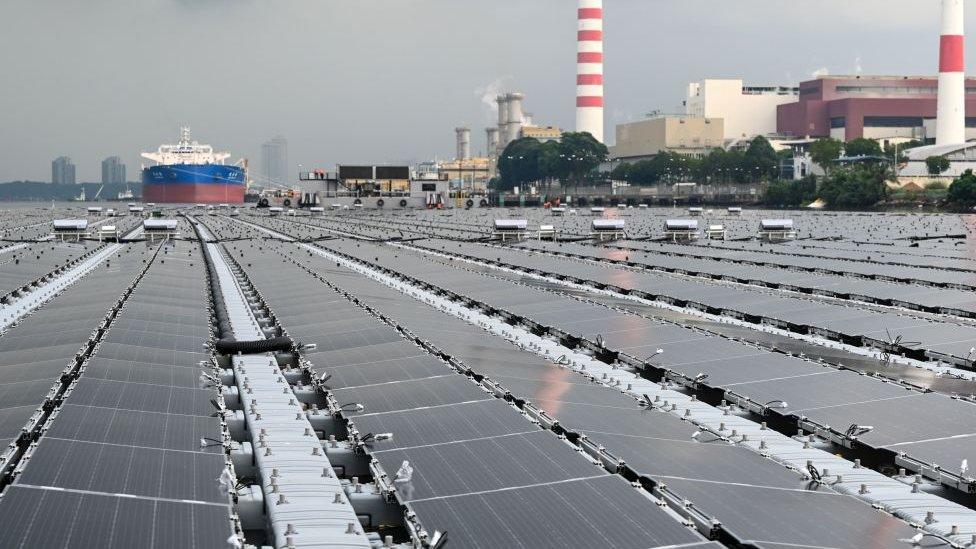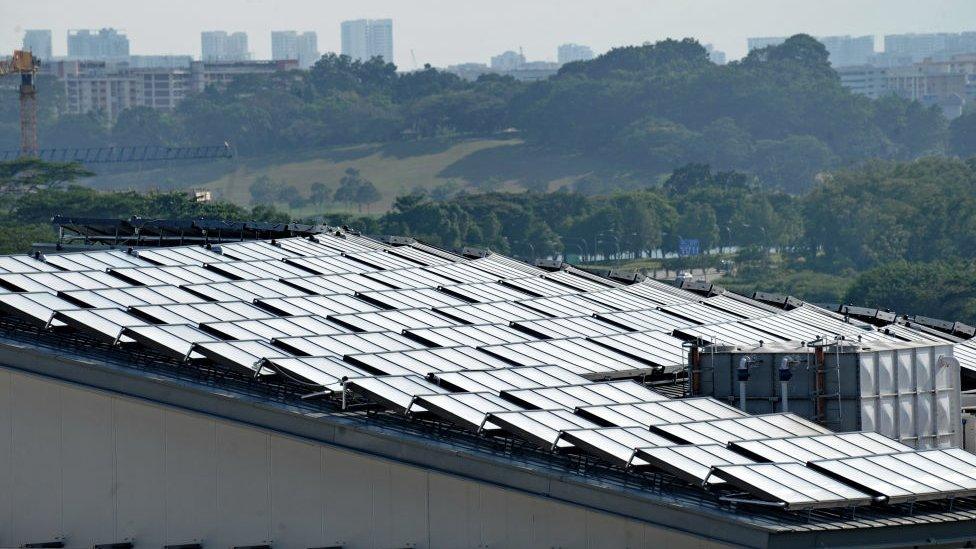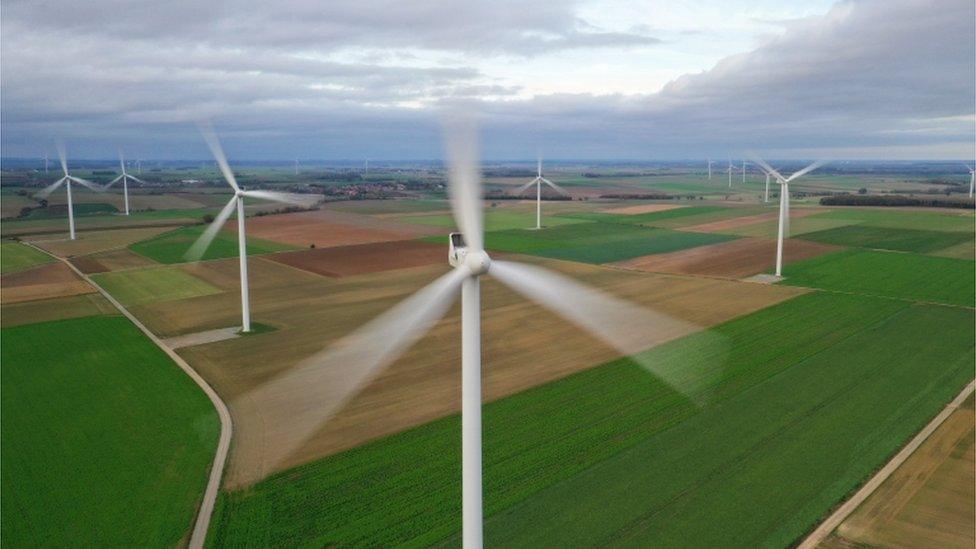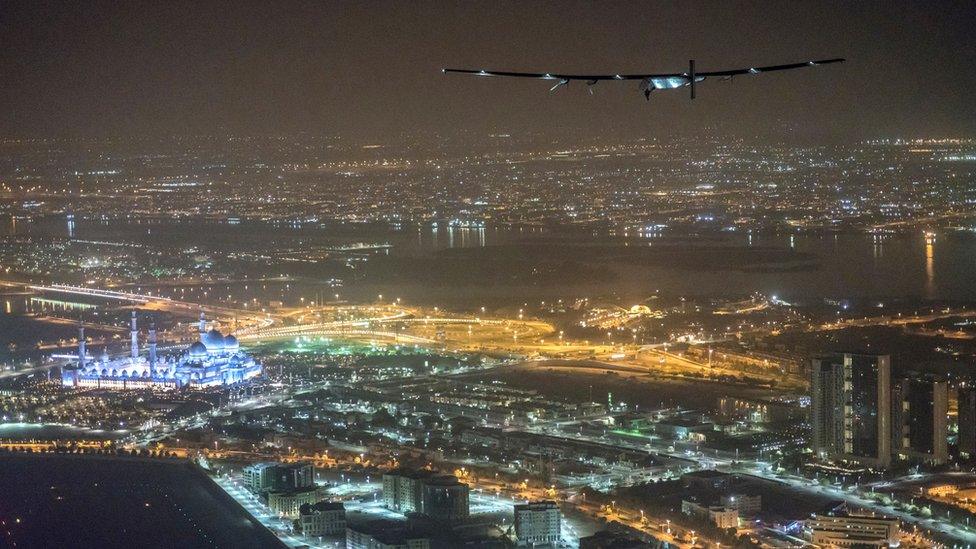Singapore combats climate change with solar farm at sea
- Published
- comments

Thousands of panels stretch into the sea off Singapore, part of the city-state's push to build floating solar farms to cut greenhouse gas emissions
A huge floating solar panel farm has been built off the coast of Singapore in an effort to tackle the city-state's greenhouse gas emissions.
A massive 13,000 solar panels have been laid out at sea, with the ability to produce up to five megawatts of electricity.
That's enough energy to power around 1,400 residential flats all year round.
The country's government last month announced a new 'green plan' designed to help the environment but some people have accused the country of failing to do enough to address climate change.
Oceans are the "new frontier"
Singapore, a city-state built upon an island in southeast Asia, relies heavily on natural gas, a non-renewable energy, to provide its power.
It may be one of the world's smallest countries, but it is among the biggest per capita carbon dioxide emitters in Asia.
The tiny country does not have rivers or strong enough wind for hydro electric or wind generated power so solar energy is the best renewable option.
Shawn Tan, vice-president of the firm behind this new project, told AFP that the sea had presented a solution for a country with limited space on dry land for producing renewable energy.
"The sea is a new frontier for solar to be installed," he said.

Solar panels have been built on most rooftops across the area because of lack of space on land
With very little space left to construct solar panels on land, developers have been forced to look elsewhere for renewable energy solutions.
Installing rooftop solar panels and farms on land has been almost entirely exhausted, and so the sea was the only remaining option.
Singapore has been under a lot of pressure in recent years to improve its commitment to the 2030 Paris Climate agreement - a deal that lots of different countries have signed up to, setting targets and promising to cut their emissions to help reduce global temperature increases.
To reduce the amount of harmful greenhouse gas produced and increase renewable types of energy like wind, solar and wave power.
To keep global temperature increase "well below" 2C and to try to limit it to 1.5C.
To review progress every five years.
Climate Action Tracker (CAT) - an independent organisation that tracks the globally agreed aim of holding warming below 2°C, says while Singapore has strengthened its efforts to combat climate change, its future targets have been "weak".
The government has said it is committing to green initiatives such as planting more trees, reducing the amount of waste sent to landfills and building more charging points to encourage the use of electric cars.
It also plans on increasing solar energy use four-fold to around two percent of the nation's power needs by 2025, and to three percent by 2030 -- enough for 350,000 households per year.
This new effort hopes to improve Singapore's carbon emissions and reduce its reliance on fossil fuels in the future.
- Published27 November 2020

- Published28 January 2021

- Published26 July 2016

